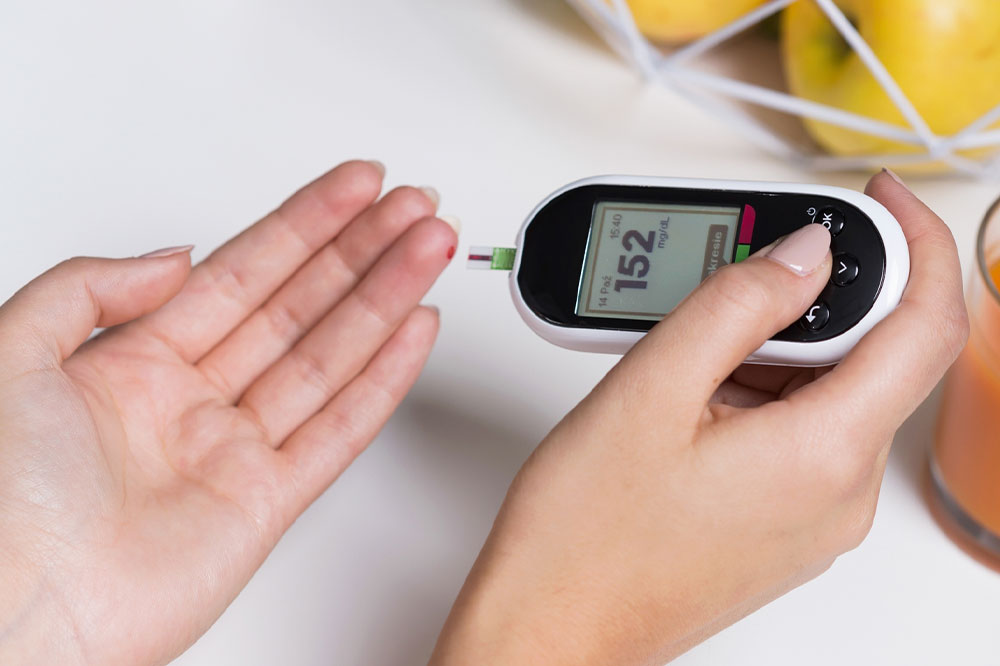Comprehensive Guide to Managing Leg Pain Caused by Diabetes
This comprehensive guide offers practical strategies for managing leg pain caused by diabetes. It emphasizes early symptom recognition, blood sugar control, exercise, proper foot and skin care, nutritional support, and complementary therapies. The article aims to improve understanding and provide actionable tips for reducing diabetic neuropathy symptoms, enhancing circulation, and maintaining quality of life. Regular consultation with healthcare providers and lifestyle modifications are key to effective management and preventing further nerve damage, making this a valuable resource for individuals with diabetes experiencing leg discomfort.

Effective Strategies for Easing Leg Discomfort Related to Diabetes
Holistic approaches to relieve leg pain associated with diabetes
Diabetes mellitus is a complex chronic disease that affects millions worldwide. While it can be managed effectively with proper care, diabetes often presents persistent challenges, particularly when it comes to complications such as nerve damage and blood flow issues in the legs. This condition, known medically as diabetic neuropathy, results from high blood sugar levels damaging nerves and impairing circulation, leading to symptoms like numbness, burning sensations, and sharp pains in the lower extremities. Understanding how to mitigate these symptoms is crucial for maintaining quality of life and preventing further health deterioration.
Diabetic neuropathy manifests through a variety of symptoms including numbness, tingling, burning, and stabbing pains in the legs. These symptoms stem from nerve impairment and reduced blood supply, often exacerbated by uncontrolled blood sugar levels and vascular problems. Creating an effective management plan requires a comprehensive approach tailored to each individual's specific condition, lifestyle, and health status. Below, we explore detailed strategies and practical tips to reduce the discomfort associated with diabetes-related leg problems, enhance nerve health, and improve circulation.
Effective management begins with early recognition of symptoms. When tingling or numbness starts in your legs, it’s vital to seek medical advice promptly. Early intervention can sometimes reverse nerve damage or at least slow its progression, preventing irreversible nerve destruction. The first step involves consulting a healthcare professional specialized in diabetic care or neurology to assess the extent of nerve damage through diagnostic tests such as nerve conduction studies or blood tests.
Once diagnosed, treatment strategies often focus on controlling blood sugar levels meticulously, as hyperglycemia is a primary contributor to nerve deterioration. Adopting a healthy lifestyle that includes balanced nutrition and regular physical activity can substantially influence nerve health and circulation. Here are some detailed steps and considerations for managing diabetic leg pain effectively:
Early Detection and Medical Consultation: Be attentive to early symptoms such as tingling, burning, or numbness in your legs. Consult a podiatrist, neurologist, or your primary care doctor as soon as symptoms appear. Early diagnosis increases the chances of successful management and prevents long-term nerve damage.
Exercise and Physical Activity: Regular, moderate exercise tailored to your capacity can improve blood flow and nerve function. Low-impact activities like walking, swimming, or cycling are particularly beneficial. Engage in leg-strengthening exercises under supervision to avoid overexertion or injury.
Improving Circulation: Elevating your legs periodically, wearing compression stockings, and avoiding prolonged sitting or standing can help maintain healthy blood flow. Proper movement enhances oxygen and nutrient delivery to nerves and tissues.
Skin and Foot Care: Diabetics should inspect their legs and feet daily for skin discoloration, cuts, blisters, or infections. Proper hygiene, moisturization, and wearing comfortable, well-fitting shoes are essential to prevent complications.
Nutritional Support: Nutrients like B-vitamins (B1, B6, B12), alpha-lipoic acid, and omega-3 fatty acids support nerve health. Incorporate foods rich in these nutrients, such as whole grains, lean meats, fish, nuts, and seeds. Supplements can be considered after consulting your healthcare provider.
Weight Management and Healthy Lifestyle: Maintaining an ideal weight reduces pressure on your nerves and joints. Weight loss not only alleviates symptoms but also enhances overall health and insulin sensitivity.
Blood Sugar Regulation: Tight glycemic control through diet, medication, and monitoring is fundamental. Use glucometers regularly to keep track of blood glucose levels and adapt your treatment plan accordingly.
Complementary Therapies and Medication: Certain medications like anticonvulsants, antidepressants, or topical agents may be prescribed for nerve pain. Complementary techniques such as massage therapy, acupuncture, and yoga can provide relief and improve mobility.
Educational Awareness and Continuous Monitoring: Stay informed about latest advances in diabetic care. Regular check-ups with your healthcare team allow for timely modifications in your management plan and early detection of complications.
It’s important to remember that nerve repair has its limitations, but early and consistent action can prevent further damage. Combining medical treatment with lifestyle modifications and supportive therapies forms a comprehensive approach to manage diabetic leg pain effectively. Always work closely with your healthcare providers to develop a personalized plan that aligns with your health needs, and do not delay seeking professional help if symptoms worsen or new issues arise.
In conclusion, managing diabetes-related leg pain requires a proactive, multi-faceted approach. From early recognition of symptoms, rigorous blood sugar control, regular exercise, and proper foot care, to nutritional support and alternative therapies—each element plays a vital role in alleviating discomfort, restoring nerve health, and enhancing circulation. As advances in diabetic care continue to emerge, staying informed and engaged with your healthcare team remains essential for maintaining mobility and quality of life despite the challenges of diabetes.





